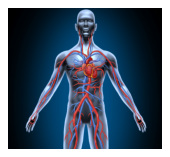 |
Peripheral Vascular Intervention
 When vascular disease affects the veins and arteries of the lower extremities, intervention may
be necessary to treat blockages or obstructions that could be otherwise life-threatening. Some
of the most telling signs of peripheral vascular disease include slow-healing wounds, skin color
and temperature changes, reduced hair growth, and muscles aches or numbness – all on the affected limb.
When vascular disease affects the veins and arteries of the lower extremities, intervention may
be necessary to treat blockages or obstructions that could be otherwise life-threatening. Some
of the most telling signs of peripheral vascular disease include slow-healing wounds, skin color
and temperature changes, reduced hair growth, and muscles aches or numbness – all on the affected limb.
Though some types of peripheral vascular disease are treatable with medication, exercise and dietary
changes, some patients require more extensive treatment in order to prevent deterioration of the limb
and eventual amputation. Angioplasty with stenting is the most commonly used procedure to treat peripheral
vascular disease. Some patients may also benefit from an excision of the plaque inside affected vessels or
from a peripheral artery bypass using a blood vessel in an unaffected area of the body.


|
|

